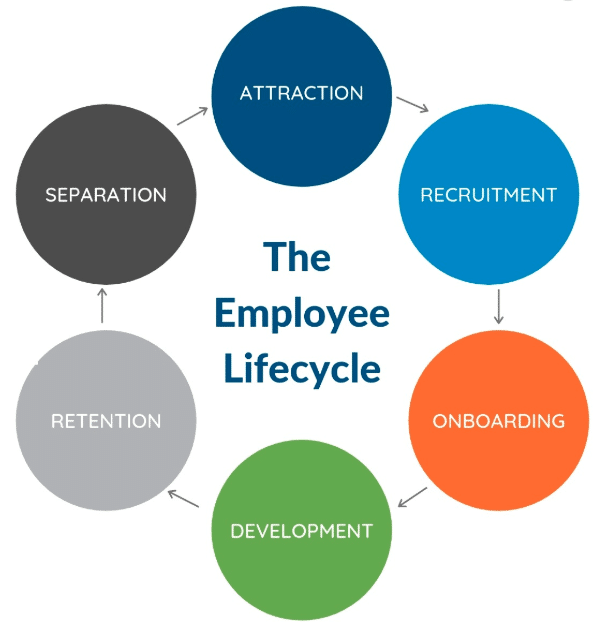By now, you know that employee engagement isn’t just about newsletters and staff parties.
According to Deloitte, employee engagement has become a top concern for CEOs, COOs and CIOs… as it should be!
Why are they prizing this issue? Well, just in case you weren’t aware, employees who are more engaged bring in all of the positives:
-
- Lower absenteeism
- Higher productivity
- Less turnover
- Higher profitability
There are many different ways to get your workplace to that ideal point where coworkers are engaged, excited and care about their work.
But one that is seeing more attention and has been rising steadily is training.
Gartner’s Top 5 Priorities for HR Leaders in 2020 report placed it at #1, illustrating the need for connecting employees to “skill-building opportunities” and giving them the desired developmental push that makes them outperform the competition.
How training enhances employee engagement (and so much more!)
Now that we’ve established education as an important cog in the engagement machine that doesn’t ‘go away’ after onboarding, it’s time to dig into just how it helps.
Immediately, employees have to know what they’re doing. A strong onboarding phase can handle this, normally.
Forbes contributor Mike Kappel took this a step further, digging into the hidden opportunities in onboarding. Here’s a great quote from Mike:
“If an employee doesn’t have a handle on their responsibilities, they won’t be engaged. Instead, they’ll be confused, frustrated, and rushed to catch up, which leads to disengagement… With a successful onboarding and training program, employees will learn how to effectively do their job.”
Some more high points from the article are:
-
- Training can teach new hires ‘the ropes’
- Onboarding and sessions are a chance for employees to meet each other, make friends and connect with their company.
- Making training a company-wide interest lets everyone voice their questions, ideas and concerns.
- Onboarding can lay out company goals for employees all to see where they fall and how their work contributes to the vision.

As most know, though, learning should continue past onboarding. Don’t stop at annually-renewed courses, either!
Training is an ongoing thing for everyone. From the time they figure out how to walk to when they learn their grandchild’s favourite lullaby, humans need continuous learning.

Retention and everything that follows can only come after learning/development (CCI Consulting)
By making each course feel less like an enforced standard and more like a building block towards development, employees naturally become more curious.
By seeing how learning can bring new meaning to everyday tasks and encourage progression, they’ll soon be looking for new opportunities to soak up new knowledge.
Studies have proven that the best workplaces – who also have the most engaged employees – prioritize education. And, naturally, the repercussions for not doing so are heavy: 40% of employees who don’t feel great about their training will quit within a year.
Retention and everything that follows can only come after learning/development (CCI Consulting)
Flipping the narrative and making education engaging
SHRM revealed that almost all employees make the decision of if they’ll stay or not within the first 6 months of their start date.
Training has always been important. And now? Learning is in higher demand than ever before.
The demand for learning
While it’s all well and good to point out the importance of training and engagement, it’s good to know that there is no shortage of demand for career development at work.
PEW Research announced that more than one third of the North American workforce is millennials – and the number is only growing.
So what’s this mean for training?
60% of millennials mainly see jobs as a chance to learn and grow. Heading into a new position, they’re often not too far removed from postsecondary education. The workforce is full of professional learners!
Importantly – especially with this digitally-inclined crop of employees – the new go-to medium for learning at work is eLearning. As a result, most millennials are aiming for rapid career progression by taking career development courses.
Millennials are the ‘professional learners’ that are making 2020’s teams the most digital and tech-savvy that they’ve ever been: They’ll have no issues accessing all of the eLearning tools their workplaces offer.
With smartphones being the main way the world accesses the internet, it’s easy to present learning as an appealing, fun part of employee engagement initiatives and the overall employee experience.
A huge opportunity for employee engagement and digital workplaces in 2020
Your employees are already on their phones.
So, reaching them with training, notices and team-building posts is easier than ever.
This isn’t just a job for the HR pros, either. Internal communications is the joining piece that connects HR, training, two-way dialogue and employee engagement together.
With the proper tools, communicators can put learning at the front of the employee experience, merging it seamlessly with messaging and resources to empower workers as much as possible.
Forming a knowledge bank can let everyone train independently: LinkedIn found that over half of employees learn best when doing it at their own pace.
It makes sense, then, to find a platform that can give your HR and internal comms teams everything they need to facilitate learning and encourage engagement.
Learning should be a [fun] part of everyday work!
Making training engaging isn’t hard anymore. Learning and growth are natural, expected parts of the everyday work experience.
After all… everyone wants a job that will help them grow! And work should be fun, too, shouldn’t it?










